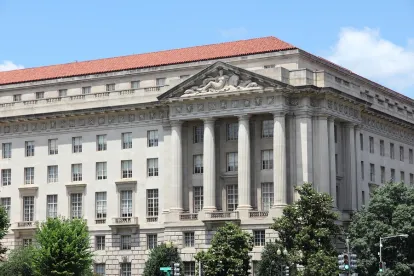The EPA today promulgated, by publication in the Federal Register, the Clean Water Act Section 401 Certification Rule that updates and clarifies the substantive and procedural requirements for water quality certification under Clean Water Act (CWA) Section 401. As noted in our August 13, 2019 alert, the U.S. Environmental Protection Agency (EPA) proposed the rule last August in response to President Trump’s April 2019 Executive Order 13868, “Promoting Energy Infrastructure and Economic Growth,” which directs EPA to consult with states and tribes in reviewing and updating CWA Section 401 guidance and regulations in an effort to accelerate and promote the construction of pipelines and other energy infrastructure projects.
The final rule, which is effective on September 11, 2020, codifies EPA’s first comprehensive analysis of the statute, legislative history, and case law informing implementation of CWA Section 401 and clarifies the scope and timeline of CWA Section 401 certification review to be consistent with the plain language of the CWA. It replaces the existing water quality certification regulations.
Key changes include:
-
A clear and concise statement of the scope of certification as follows:
The scope of a Clean Water Act section 401 certification is limited to assuring that a discharge from a federally licensed or permitted activity will comply with water quality requirements.
According to EPA, the most challenging aspects of Section 401 concerned the scope of review and action on a certification request. The scope of the final rule thus is clearer – and more stringent – than EPA’s previous regulations. The scope now requires certifying authorities to conclude that a discharge “will comply” with water quality requirements, rather than providing “reasonable assurance” that the activity will not violate water quality standards. EPA also finalized definitions for scope terms “discharge” and “water quality requirement.” The final rule affirms that a certifying authority’s review and action under Section 401 must be limited to water quality impacts from a potential point source “discharge,” and does not allow conditions unrelated to that discharge.
-
Clarification that a discharge need not involve pollutants in order to trigger Section 401. EPA concluded in the final rule that Section 401 is triggered by any unqualified discharge, rather than by a discharge of pollutants, consistent with the U.S. Supreme Court holding in S.D. Warren Co. v. Maine Bd. of Envtl. Prot., 547 U.S. 370 (2006), in which Pierce Atwood represented S.D. Warren Co. before the Supreme Court. In the Warren case, the Supreme Court held that, because Section 401 uses the term “discharge” but does not specifically define that word, Congress intended that word to be broader than the term “discharge of pollutants” that is used in other provisions of the CWA (e.g., Section 402).
-
Narrowing state and tribal authority under the CWA. The final rule clarifies that the scope of a state’s or tribe’s Section 401 review or action “is not unbounded and must be limited to considerations of water quality.” The imposition of conditions unrelated to water quality, such as requiring construction of biking and hiking trails, requiring payments to state agencies for improvements or enhancements that are unrelated to the project, or the creation of public access for fishing along waters of the United States, is not consistent with the scope of the CWA generally or Section 401. Also inconsistent with the CWA and Section 401 are attempts by certifying authorities to address all potential environmental impacts from the permitted project, such as impacts associated with air emissions and transportation effects. Under the final rule, states and tribes that consider effects of an activity rather than a discharge are acting outside of the CWA.
-
Specific statutory and regulatory timelines for review and action on a Section 401 certification. The final rule requires final action to be taken within one year of the certifying authority’s receipt of a certification request and provides no tolling provision to stop the one-year clock. It is unclear how this change will affect the long-established practice of some federal agencies that rely on withdrawals and refilings, such as the Federal Energy Regulatory Commission (FERC).
Moreover, under the final rule, federal agencies (not the certifying authority or EPA) determine the reasonable period of time for a certifying authority to act on a request, and the final rule establishes procedures for setting, communicating, and (where appropriate) extending the reasonable period of time (provided that the extended time period does not exceed one year from receipt). Given the number of Section 401 certification requests that are submitted each year, this process likely will create additional administrative burdens on federal agencies.
-
Clarification of the start of the one-year deadline. The statutory timeline for certification review commences upon receipt by the certifying authority of a “certification request,” rather than the receipt of a “complete application” or “complete request” as determined by the certifying authority. In response to public comments, the proposed rule was revised such that the final rule provides a general definition of “certification request” and provides two different lists of documents and information that must be included in a certification request: one list for individual licenses and permits and a separate list for the issuance of a general license or permit. EPA has defined “receipt” to mean “the date that a certification request is documented as received by a certifying authority in accordance with applicable submission procedures.” Therefore, under the final rule, the statutory clock begins on the date when the certification request is documented as received by the certifying authority.
-
Specific contents of a certification. Under the final rule, a certification must include certain supporting information for each condition, including, at a minimum, a statement explaining why the condition is necessary to assure that the discharge from the proposed project will comply with water quality requirements, and a citation to the federal, state, or tribal law that authorizes the condition. The final rule also includes slightly different information requirements to support conditions in a certification for issuance of a general license or permit. While EPA had proposed also to require a statement of whether and to what extent a less stringent certification condition could satisfy applicable water quality requirements, this provision is not in the final rule.
Under the final rule, if a certification condition is not supported by the required information, the condition will be considered waived; however, a waived condition does not result in waiver of the entire certification.
-
Discretionary authority for EPA regarding neighboring jurisdictions. The final rule affirms the EPA’s interpretation that section 401(a)(2) establishes authority for EPA to determine in its discretion whether the discharge from a certified project “may affect” the water quality in a neighboring jurisdiction, modifying the EPA’s existing certification regulations to mirror the CWA in describing EPA’s procedural duties regarding neighboring jurisdictions.
-
Federal agency review of certifications. The final rule clarifies that federal agency review of certifications, conditions, and denials is procedural and does not extend to substantive evaluations, and thus does not amount to a federal agency “veto” when the agency determines a state 401 certification does not comply with the requirements of the CWA. Under the final rule, if a certification, condition, or denial meets the procedural requirements of Section 401, the federal agency must implement the certifying authority’s action, irrespective of whether the federal agency may disagree with aspects of the certifying authority’s substantive determination.
-
Enforcement authority for the federal agency issuing the permit. Under the final rule, the federal agency issuing the permit is responsible for enforcing certification conditions therein. This rule clarifies that once the certifying authority acts on a certification request, the CWA does not provide independent authority for certifying authorities to enforce the conditions that are included in a certification. This enforcement role is instead reserved to the federal agency issuing the federal license or permit.
However, the final rule expands the post-certification inspection function to all certifying authorities. Certifying authorities will now have the opportunity to inspect the facility or activity prior to initial operations to determine whether the discharge from the certified project will violate the certification. After an inspection, the certifying authority is required to notify the project proponent and federal agency in writing if it determines that the discharge from the certified project will violate the certification and to specify recommendations to bring the project into compliance with the certification.
The public comment period, which concluded on October 21, 2019, garnered over 1,000 comments, which may be a sign of litigation to come.




 />i
/>i

